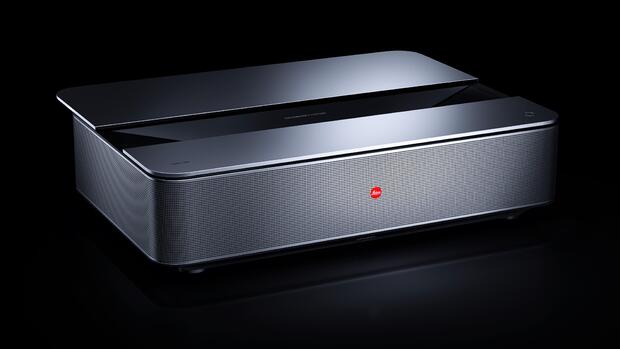Berlin Leica is not showing a camera at the Ifa electronics fair in Berlin, but a TV – the Cine 1 model. It was developed in cooperation with the Chinese electronics group Hisense, one of the five largest TV manufacturers.
However, the device is not a classic TV, neither technically nor in terms of price. Leica itself speaks of a “home cinema product”, which can be seen from the price of 6900 euros upwards. Further models are to follow in the coming years – in a longer-term cooperation, the companies want to “strengthen their position” in this segment.
It is the latest example of how the traditional company, which has achieved cult status with its cameras, wants to open up new product segments. “The core competence of the company is to get the best out of a picture,” CEO Matthias Harsch told Handelsblatt. The technology is also already being used in smartphones.
However, the TV market is brutally competitive. After the corona pandemic, in which many consumers made life at home comfortable with new televisions, demand unexpectedly suddenly collapsed, observes Paul Gray, who heads the home electronics division at market researcher Omdia. “We are in the midst of a painful inventory adjustment.“
Diversification is not a departure from the camera itself. To date, Leica models are in demand, despite the smartphone boom, which pushed many products out of the market. The manufacturer sells premium products to lovers who appreciate excellent technology and pay several thousand euros for it.
The cameras are more in demand than ever
Mobile phone photography is even beneficial for the premium segment of the camera market, says CEO Harsch: “This is how many people discover their passion for the subject.“ The electronics manufacturer is aiming for five to ten percent growth in this segment – and that in a market that has collapsed within ten years.
The hardship after the turn of the millennium, when Leica had missed the conversion to digital photography and almost perished, is almost forgotten. Majority owner and Chairman of the Supervisory Board Andreas Kaufmann saved the company, and to this day he still largely determines the strategy.
Moving into new business areas has proven itself so far for the company with a history of more than 100 years. A few weeks ago, it announced a record result for the financial year just ended, sales increased by 16 percent to 450 million euros.
With Panasonic, Leica develops cameras, the drone manufacturer Yuneec and the smartphone manufacturer Xiaomi supply it with image technologies. In the meantime, Huawei technology was also awarded the “made in Germany” seal by Leica, until the US sanctions were imposed on the Chinese group. The partnerships are important, Harsch says: “As a medium-sized company, we cannot develop everything completely ourselves.“
This principle also applies to the development of the Cine 1. The laser TV set is a projector that throws an 80 or 100-inch image onto the screen from a short distance. Hisense, one of the big five in the TV market, supplies numerous components, from the chips to the smart TV platform to the loudspeaker. Leica is involved with the lens – and the awareness, which should help with the marketing in China. This is where the Superbeamer is in demand.
Lump risk China?
So far, laser projectors account for less than one percent of the TV market, and according to market researchers, sales of these devices are only one billion dollars – albeit with an increasing trend.
This is an attractive niche for Leica, emphasizes Harsch, who was previously CEO of the television manufacturer Loewe. “We have a two percent market share for cameras – if we get to the high-end laser TVs on this scale, that would be gigantic.“ He does not give a concrete sales forecast.
However, the new technology has to prevail: do home cinema fans want to darken the living room so that the picture can be clearly seen? How good is the quality compared to other technologies? And is the price competitive, when the cost of panels is significantly reduced?
The plan is ambitious, Leica BOSS knows that harshly. “With every new technology, the question is how quickly it will catch on. We have yet to see that,“ he says.
When looking for cooperation partners, Leica always finds what it is looking for in China. This is a risk in view of the geopolitical tensions, as the Huawei case shows: because of the sanctions of the US government, the business of the Chinese technology group in the West has collapsed – even the smartphones that used Leica technology were suddenly practically unsaleable. In the meantime, the partnership has ended.
Harsch does not see this as a problem. “Our business is global, Germany accounts for less than five percent of total sales, China for 15 percent, the USA for 20 percent,” says the manager. “We therefore have no risk of lumps in sales.“
However, he also knows: “The risk of geopolitical conflicts will increase, but due to our history, we have a lot of experience in managing them.“








